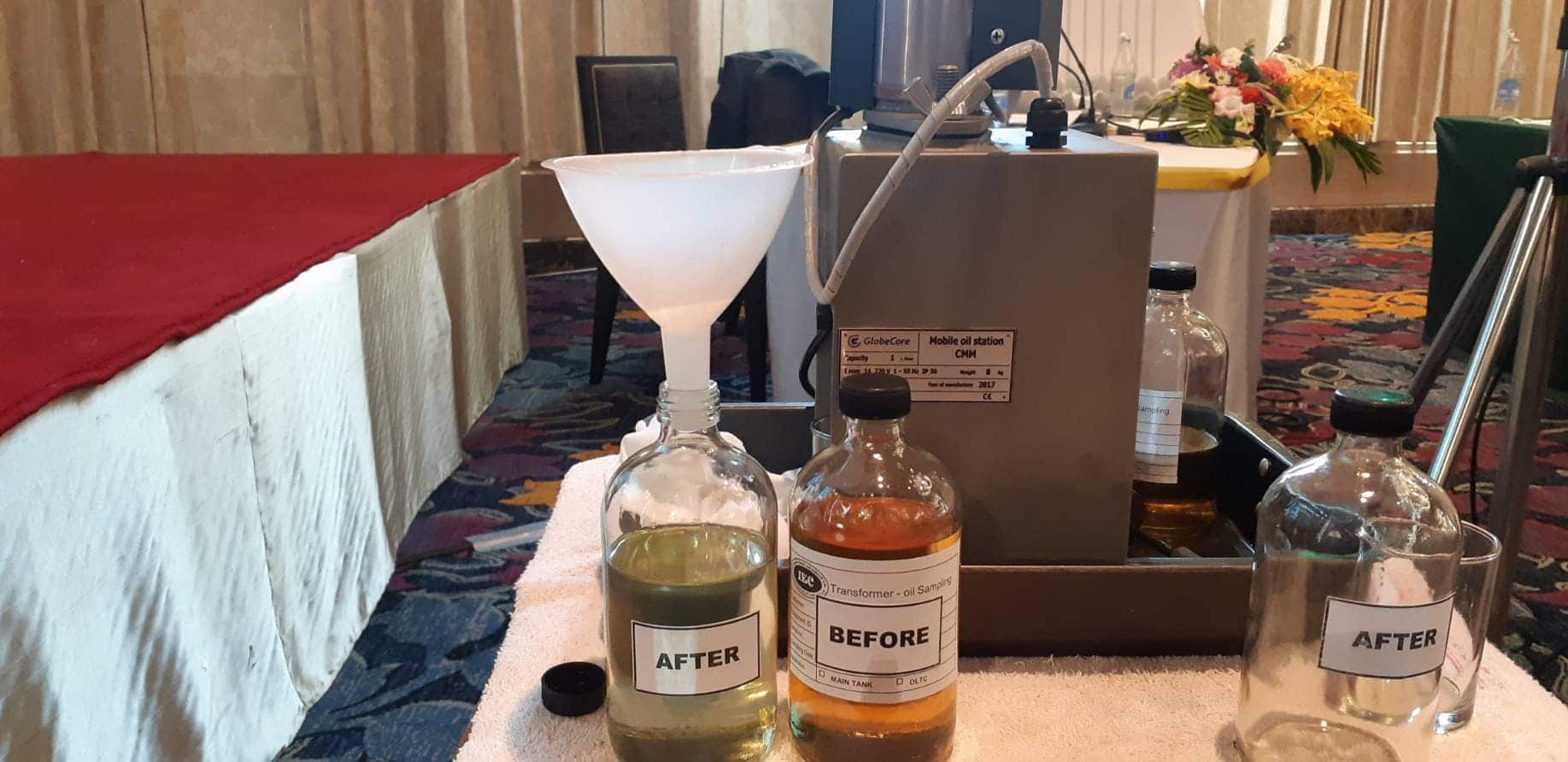Transformer oils are made from crude oil and are used in transformers and other electrical equipment. The oil performs two main functions: insulation and heat dissipation.
Classes of transformer oil characteristics
The characteristics and properties of transformer oils can be grouped into several classes:
- functional;
- properties related to purification and oxidation stability;
- operational;
- properties related to safety and the environment.
The functional properties describe the quality of insulation and cooling. These include density, viscosity, dielectric strength, dissipation factor, pour point and moisture content. Purification and oxidation stability are related to such properties as appearance, acidity, presence of corrosive sulfur, furfurol content. Operational properties determine the duration of transformer oil service life and its reaction to external influences (electricity and temperature). These include oxidation stability and gas solubility. Safety of transformer oil and their environmental impact depends on flashpoint, the content of polycyclic aromatic hydrocarbons and polychlorinated biphenyls.
Viscosity and density
The ability of oil to dissipate heat from hot transformer components depends primarily on viscosity. Lower viscosity means better oil circulation and better heat exchange. Viscosity decreases when the temperature of the oil drops, which may reduce circulation and overheating of critical components.
As for density, it is better if this parameter is low. This helps prevent the formation of ice in the oil from water at subzero temperatures. Otherwise an electric breakthrough becomes possible. The density of transformer oil at 20°С must not exceed 895 kg/m3, or 897 kg/m3 at 15°С.
Pour point
Pour point is another important parameter of transformer oil. It is the minimum temperature at which the oil still flows. The recommended value for this parameter is at least 10°С lower than the lowest possible load temperature for cold start.
Water content
The presence of water in transformer oil influences such important parameters as dielectric strength and dissipation factor. The former indicates the voltage the oil can withstand in the electric equipment, the latter shows electrical properties of the oil. Increase of moisture content causes the dielectric strength to decrease and the dissipation factor to increase. This is why even new oil is dehydrated before filling a transformer, since it can accumulate water during transportation and storage. In general, the oil must be processed to achieve a dielectric strength of at least 70 kV, and the dissipation factor below 0.005% at 90°С.
Appearance
The appearance of transformer oil can be the first indication of possible changes of its condition. A visual inspection of a 10cm thick sample in backlight can help detect visible impurities, free water and suspended particles. New oil must be transparent.
Acidity
New unused transformer oil must be neutral. During operation the acidity gradually increases due to oxidation and aging of oil. The acid number of new oil must not exceed 0.01 mg KOH/g.
Corrosive sulfur
The presence of corrosive sulfur in the oil is not allowed due to its aggressiveness to the copper, steel or silver surfaces in the transformer. It can damage such components as switch contacts.
Oxidation stability
This parameters characterizes the ability of transformer oil to resist the oxidation process, which increases acidity and causes the formation of sludge. High oxidation stability extends transformer lifetime, reduces the amount of sludge, corrosion and electric losses.
Hazardous substances
Some substances contained in transformer oil can be hazardous for human health and the environment. These include polycyclic aromatic hydrocarbons, polychlorinated biphenyls and 2-furfurol. There are maximum permissible concentrations for each of these. For instance, PCB content may be regulated to not exceed 0.1 mg/kg.
Transformer oil processing equipment
Transformer oil comes under the influence of many factors which reduce its quality, such as high voltage, high temperature, oxygen, water etc. With time the oil ages beyond usability in a transformer.
The oil can be restored using special equipment. Depending on the extent of changes, purification may be sufficient. In other cases, when the oil is aged and acidic, oil regeneration must be used.
GlobeCore manufactures equipment both for purification and regeneration of electrical insulation oils. Filtration, as well as heat and vacuum (to remove both particulate matter and water and gases) are used in the former case.
Regeneration includes the purification stage, followed by passing the oil through a layer of sorbent and adding of an antioxidant. Adsorbents can remove impurities which cannot be captured by regular filters, specifically, oil degradation products and acids.
Periodic regeneration of transformer oils with the GlobeCore technology:
- Clarifies the oil.
- Removes soluble and insoluble sludge.
- Improves the oxidation stability of the oil.
- Reduces the solubility of gases in the oil.
- Significantly lowers the dissipation factor.
- Reduces the acid number.
Regenerated oil fully meets the new oil quality standards. Regenerated oil can be used again, and timely regeneration can extend transformer life by 15-20 years.



